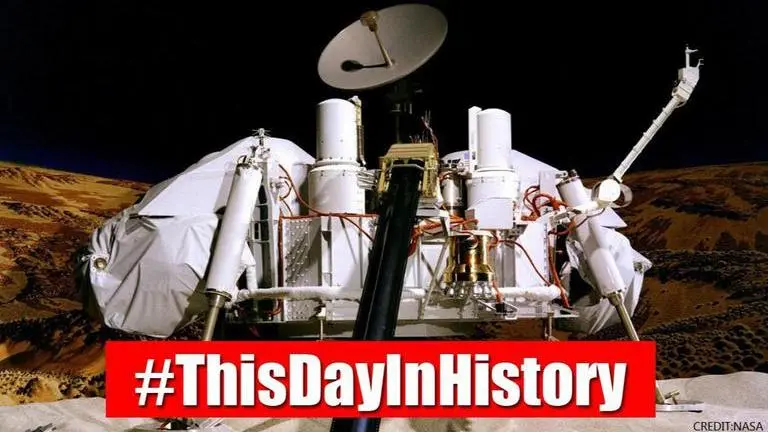Updated 3 September 2020 at 14:13 IST
NASA’s Viking 2 marked the second US landing on Mars on this day in 1976: Read more
NASA’s Viking 2 was a joint orbiter-lander mission that saw the second US landing on Mars on this day today, i.e. September 3, back in 1976.
- Science News
- 3 min read

NASA’s Viking 2 was a joint orbiter-lander mission that saw the second US landing on Mars on this day today, i.e. September 3, back in 1976. The Viking 2 mission was a part of the American Viking program to Mars and it consisted of an orbiter and a lander essentially identical to that of the Viking 1 mission. The second mission’s lander operated on the surface for 1316 days and was turned off on April 12, 1980, when its batteries failed.
#OTD in 1976, Viking 2 touched down in Utopia Planitia on Mars. 📷 NASA/JPL pic.twitter.com/PpsgczIjml
— Dr. Manuela Rossol 🏳️🌈👩🔬🔬🔭 (@astromonocyte) September 3, 2020
As the lander spent over three Earth years on the surface of the Red Planet, it took almost 16,000 images in 706 orbits around Mars. It analysed the regolith in front of it and even conducted life experiments. Viking 2 took snapshots of craters, channels and other Mars feature from above as well.
The Viking program gave researchers a sense of what it's like to live and work on the Red planet. When the lander sent back the result of their life experiments, NASA reportedly said at that time that there was definitive evidence of life. That has been called into question in the decades since.
Advertisement
Back then, the US space agency had informed that while the Viking 1 lander touched down on the western slope of Chryse Planitia (the Plains of Gold), the Viking 2 lander settled down at Utopia Planitia. Both the landers functioned for at least 90 Earth days or 120 Martian ‘sols’ on the surface. NASA had informed that Viking 2 took its ride into space on a Titan rocket on September 9, 1975, following the footsteps of its twin, Viking 1.
The second lander to Mars, Viking 2, took images of the regolith, referred to often as ‘soil’. The pictures show that the soil resembled those produced from the weathering of basaltic lavas. According to NASA, the tested soil contained abundant silicon and iron, along with significant amounts of magnesium, aluminium, sulfur, calcium and titanium. Trace elements, strontium and yttrium, were also detected.
Advertisement
Viking 2’s biology experiment
Furthermore, Viking 2 also carried a biology experiment whose purpose was to look for life. As per reports, second lander’s biology experiment weighed 15.5kg and consisted of three subsystems - the Pyrolytic Release experiment (PR), the Labeled Release experiment (LR), and the Gas Exchange experiment (GEX). In addition, independent of the biology experiments, the second lander carried a Gas Chromatograph/Mass Spectrometer (GCMS) that could measure the composition and abundance of organic compounds in the Martian soil.
Both Viking 2 and its twin, Viking 1, carried primitive tools to search for Mars life. The Viking experiments had several parts to their life detection experiments. The landers didn't find any life, however, researchers in the years following were curious about whether the experiments were adequately designed to detect lifeforms.
(Images: NASA/JPL)
Published By : Bhavya Sukheja
Published On: 3 September 2020 at 14:13 IST



